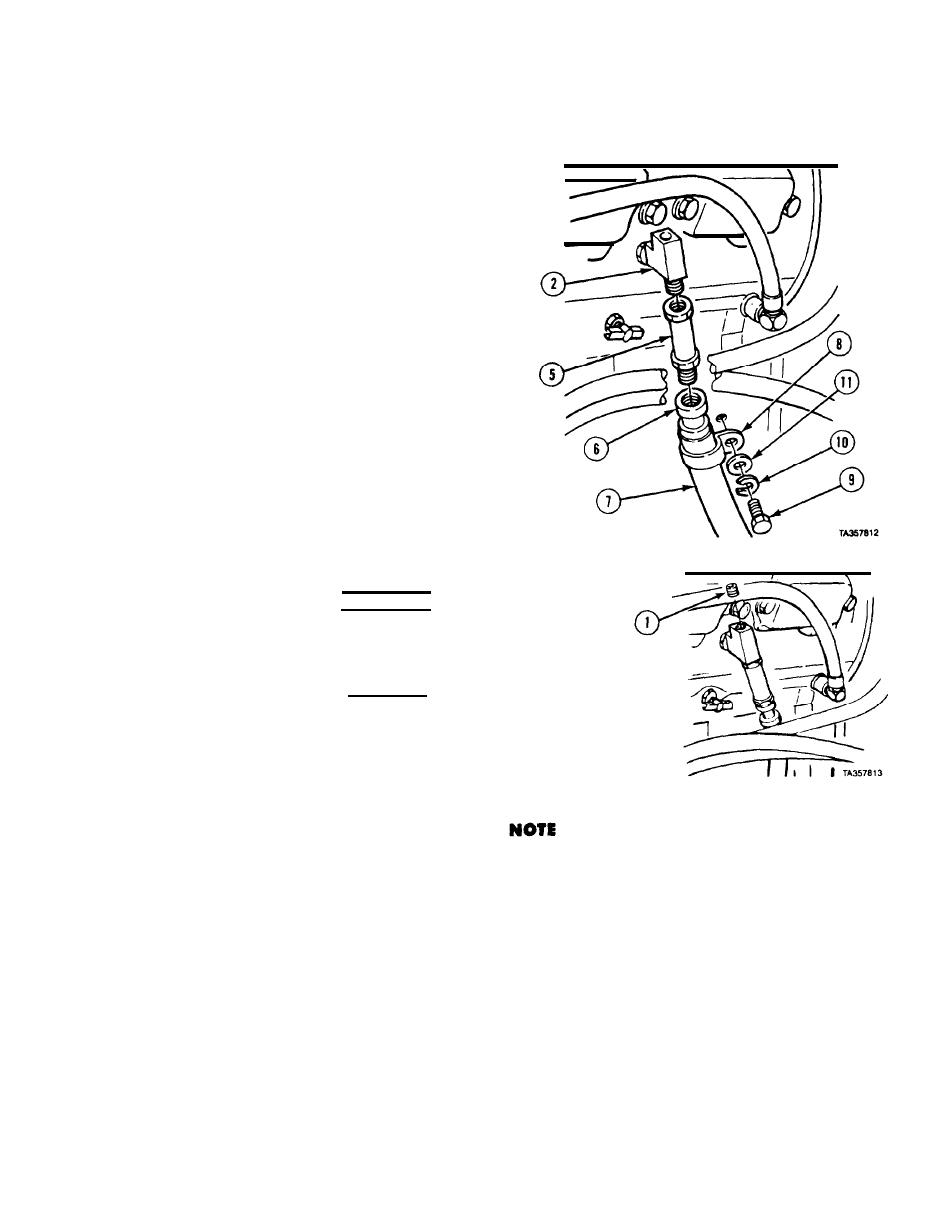 |
|||
|
|
|||
|
|
|||
| ||||||||||
|
|
 TM 9-2815-224-34&P
Engine Block Maintenance Instructions (Cont)
(4) Install check valve (5) on tee (2).
(5) Install fitting (6) and hose (7) on check
valve (5).
(6) Install clamp (8) with screw (9),
lockwasher (10), and washer (11).
c. Testing Air Flow.
WARNING
Do not stand in front of vehicle when testing airbox
pressure. Brake could release and vehicle could jump
forward causing personal injury or death.
CAUTION
Do not operate vehicle with transmission engaged and at
maximum rpm for more than 15 seconds at a time.
Transmission oil heats up quickly and could cause
transmission to fail.
(1) Remove plug (1) and install air pressure gage.
(2) Chock wheels, set parking brake and foot brake (TM 9-2320-279-10).
Low airbox pressure can be caused by an obstruction in the air inlet system, dirty
or damaged air cleaners, damaged blower rotors, or an air leak from the airbox
(such as leaking end plate gaskets). High airbox pressure reading can be caused
by partially plugged cylinder liner ports.
(3) When told by Soldier A, Soldier B starts engine (TM 9-2320-279-10), warms up engine for
5 minutes, then shifts transmission into Drive (D).
(4) Check airbox pressure. Pressure shall be 9 psi (62 kPa) at 1200 rpm, 16 psi (110 kPa) at 1800 rpm
and 20 psi (138 kPa) at 1950 psi.
d. Follow-on Maintenance.
(1) Stow spare tire (TM 9-2320-279-10).
(2) Connect batteries (TM 9-2320-279-20).
END OF TASK
|
|
Privacy Statement - Press Release - Copyright Information. - Contact Us |